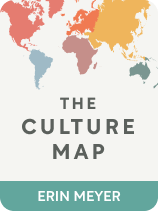

This article is an excerpt from the Shortform book guide to "The Culture Map" by Erin Meyer. Shortform has the world's best summaries and analyses of books you should be reading.
Like this article? Sign up for a free trial here .
What is the difference between consensus and individual decision-making? Why do people from different cultures tend to make decisions based on different factors?
According to Erin Meyer, the author of The Culture Map, every culture has a prevalent approach to decision-making. She defines two primary types of decision-making styles: consensus (where people decide by unanimous agreement) and individual (where all opinions are considered but the final decision is made by the chief decision-maker).
In this article, we’ll explore how a culture’s decision-making style interacts with its leadership style.
Consensus vs. Individual Decision-Making
In her book The Culture Map, Erin Meyer defines two cultural decision-making styles: consensus and individual.
In countries that decide by consensus, the group takes everyone’s opinion into account. All the relevant parties consider all the information, and they make a decision only when everybody agrees.
In countries that decide individually, the decision-maker may consider others’ opinions, but ultimately, the individual (usually the boss) makes the decision.
Generally speaking, countries that decide individually tend to adopt the hierarchical approach to leadership (although there are some exceptions—notably, the United States), and countries that decide by consensus tend towards egalitarian leadership. However, there are exceptions.
Exceptions to the Egalitarian/Consensus Trend
Most foreigners correctly expect the leading and decision-making styles of a country to mirror each other. So they find exceptions to these trends incredibly frustrating.
Meyer specifically describes two countries that are hierarchical but decide by consensus: Germany and Japan.
Germany’s style of decision-making is evident in how German companies are set up. Decisions in German companies aren’t made by an individual CEO. Rather, the locus of power lies in groups of managers who make the final decisions for their companies. The titles/levels of these groups vary depending on the company’s size.
Japan is another notable exception, and their ringi method of deciding is unique enough that Meyer devotes a sizable portion of her chapter to it. In Japan, a proposal is first created through the nemawashi process, during which the views of the individual stakeholders are uncovered so that they can be included in the proposal. This proposal, known as the ringisho, is then first discussed informally amongst the lowest level of relevant managers. If they all agree, they approve the proposal and pass it up to the next managerial level. In this way, the document moves up the chain. So by the time the decision reaches the highest level, it’s already been approved by every lower-ranking manager.
(Shortform note: In a Harvard Business Review article, Meyer suggests that a country’s decision-making style affects the industries it excels in. Japan and Germany are both major automotive-producing nations. Making cars involves a long process and requires a perfect end result, so it’s exactly the type of industry where deciding by consensus works. Conversely, Meyer argues, individual decision-making is best for industries that prioritize speed. This begs the question: Does a culture’s decision-making style determine the industry it dominates or is the other way around? Meyer doesn’t address this question, but it’s worth further consideration, especially in our age of rapid technological advancement. As people worldwide race to be the first to discover new technologies, it’ll be interesting to see how this race affects cultures’ decision-making styles.)
Exceptions to the Hierarchical/Individual Trend
Unlike other egalitarian countries, the United States employs the individual style of deciding.
Meyer posits that the American style of deciding comes from its people’s history.
In early America, the most successful people were the ones who were first—whether because they arrived early enough to get the best land, or because they were the first to accomplish something in the New World. It didn’t matter whether you made mistakes along the way because you could fix them later. What mattered was that you got it done quickly.
As such, Meyer argues, Americans grew to value speed and adaptability—and this value permeates the ideals of modern-day American business.
(Shortform note: Americans might also decide individually because they view the concept of choice as sacred. Influenced by The Wealth of Nations, Americans tied personal and religious freedoms to economic freedoms—and they were the only country in the world to do so. So Americans uniquely tie both their individual entities and their identities as Americans to the concept of freedom of choice. This may be why the United States, unlike other egalitarian countries, decides individually in business.)

———End of Preview———
Like what you just read? Read the rest of the world's best book summary and analysis of Erin Meyer's "The Culture Map" at Shortform .
Here's what you'll find in our full The Culture Map summary :
- The eight axes you can use as a framework to analyze cultural differences
- How to better relate to those of another culture to accomplish business goals
- How the Vikings have more gender equality than we see today






